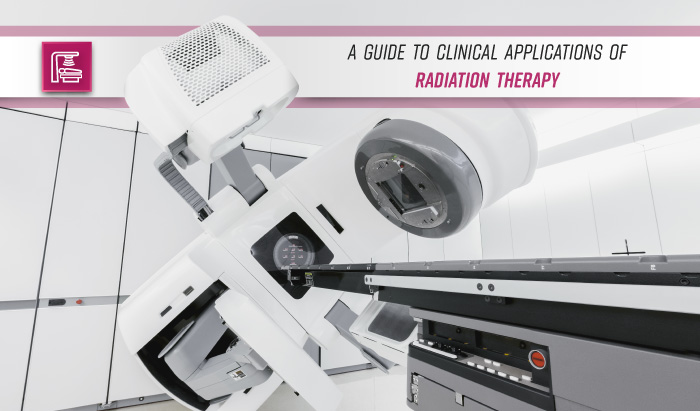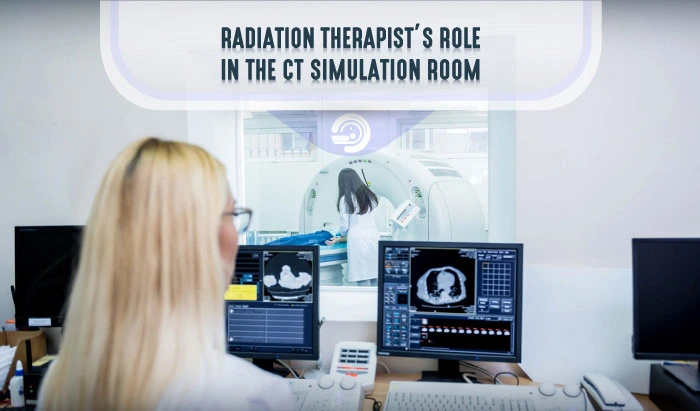Radiation Therapy Uses: A Guide to Clinical Applications of Radiation Therapy

Radiation Therapy Uses: A Guide to Clinical Radiotherapy Applications


Radiotherapy or radiation therapy, often abbreviated RT, RTx, or XRT, is a therapy using ionizing radiation normally delivered by a linear accelerator. It is a common misconception that the only use for radiotherapy is as part of cancer treatment, but radiotherapy can also be used for other purposes. This article will provide you with a clear and concise overview of the different applications of radiotherapy, including both applications for cancer treatment and application for treatments for other, non-cancerous conditions.
Radiation Therapy: Cancer Treatment
Radiation therapy is used in several ways in the treatment of cancer. These uses include curative, palliative, and symptomatic applications. Each application is discussed below.

- Curative radiotherapy in cancer treatment consists of a locoregional treatment of cancer, aimed at locally destroying cancer cells and preventing them from multiplying while at the same time preserving the healthy tissue and surrounding organs as best as possible. In addition to this role, there are also palliative and symptomatic uses for radiotherapy.
- Palliative radiation therapy is employed to slow the progression of overly advanced local cancer or of a metastasis that is known to be incurable.
- Symptomatic radiation therapy is prescribed to relieve a major symptom. There are three types:
- Analgesic radiation therapy: used to relieve pain.
- Often used for severe pain from bone metastases, which usually resist drug treatment
- Generally quick effects, from the first sessions
- Hemostatic radiation therapy: used to dry up and stop persistent bleeding that can be found in cancers of the bladder, rectum, or gynecological cancers.
- Decompressive radiation therapy: used in cases in which there are signs of spinal or radicular compression.
- Emergency in radiation therapy
- Must be treated at the first sign to be fully effective and must be brief
- Often just a few sessions are delivered to limit the irradiation of the vertebrae
- Venous or lymphatic compression edema is also improved with this treatment
- Analgesic radiation therapy: used to relieve pain.
Radiation Therapy: Non-cancerous Conditions
As mentioned above, radiation therapy may also be prescribed for conditions other than cancer. Some of these radiotherapy applications are described below.
- Benign intracranial tumors are non-serious, non-fatal tumors that cannot give rise to metastases. However, they can progress to a malignant tumor. Their reference treatment is surgical although radiation therapy can be used as an alternative or a complement.

- Cerebral arteriovenous malformations are abnormal links between the arteries and the veins, revealed in young adults by several types of neurological symptoms.
- Therapeutic options: Endovascular embolization, micro-neurosurgery, and stereotactic radiation therapy are applied alone or combined
- Initially, only malformations of small dimensions not accessible to surgery were irradiated
- With the development of stereotactic radiotherapy, indications increased

- Heterotopic or ectopic ossification is the development of an abnormal bone structure in soft tissue. Radiation therapy is:
- An effective modality for its’ prevention in high-risk patients after a hip surgery
- An alternative to non-steroidal anti-inflammatory drugs for prophylaxis, eliminating the risks of gastrointestinal toxicity and bleeding, in addition to the risk of pseudarthrosis in trauma patients with multiple fractures

- Blood components irradiation: You’re probably wondering what this is and what on Earth it has to do with radiotherapy applications. The irradiation of blood components aims to kill certain cells that can cause life-threatening disease for certain patients who require a blood transfusion.
- This irradiation, which delivers a dose of approximately 20 to 25 Gray to the blood unit, is carried out using a cesium 137 irradiator or an X-ray irradiator
- Blood transfusion centers are equipped with this type of equipment
- In some hospitals, these devices are not available. In these situations, radiation therapy departments can save the day by performing the procedure with the linear accelerator
- The blood unit is installed on the treatment table facing the head of the accelerator so that it is completely covered by the X-ray beam
- A dose of approximately 25 Gray is delivered, and for dosimetric reasons, two boluses are installed, one above and the other below the unit

Recent Developments in Radiotherapy Applications
Doctors and scientists across the globe have been exploring and experimenting with using radiation therapy to treat the lungs of COVID-19 patients. The experiments thus far have shown promise. Stayed tuned for our upcoming article that addresses this new, experimental radiotherapy treatment in detail! Follow us on Facebook, Instagram, and Linkedin so you never miss an update!


